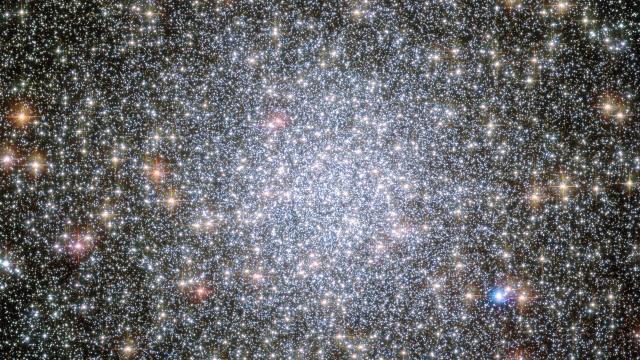The space between stars may look pretty empty – and for most mundane intents and purposes, it is – but it’s actually full of electromagnetic radiation and vast clouds of matter, together collectively known as the interstellar medium. Some of it is aliphatic carbons that leak from stars, and a new study from University of New South Wales (UNSW) and Ege University researchers has found there is an awful lot of it.
The globular star cluster 47 Tucanae roughly 13,000 light years from Earth in the halo of the Milky Way galaxy, as seen through the Hubble Space Telescope. Photo: NASA (AP)
Interstellar space has enough of the greasy, likely toxic carbon substance that UNSW professor and study co-author Tim Schmidt says it might accumulate on any theoretical future interstellar craft, The Guardian reported:
The Australian-Turkish team discovered more than expected: 10 billion trillion trillion tonnes of gloop, or enough for 40 trillion trillion trillion packs of butter.
Prof Tim Schmidt, a chemist at the University of New South Wales, Sydney and co-author of the study, said that the windscreen of a future spaceship travelling through interstellar space might be expected to get a sticky coating.
“Amongst other stuff it will run into is interstellar dust, which is partly grease, partly soot and partly silicates like sand,” he said, adding that the grease is swept away within our own solar system by the solar wind.
Schmidt and his fellow researchers “recreated in the laboratory the process by which greasy carbon forms in the outflows of carbon stars,” The Guardian wrote, and then used spectroscopy to see how the material reacted to different types of light.
That data in turn allowed them to use prior astronomical observations to estimate how much of the material appears to have accumulated in the vast expanses between stars, with the scientists concluding that said grease accounts for between quarter to half of all carbon in the galaxy.
The abundance of the interstellar grease has clear implications for the availability of some of the building blocks of life across the Milky Way. Materials in the interstellar medium are the foundation of new stars and planets, and the proportion of carbon in it could determine how many organic compounds form in the resulting star systems.
“It’s made in stars, goes through the interstellar medium and gets incorporated into new planetary systems and has ended up incorporated into life,” Schmidt told the paper. “It’s part of the big story, the biggest story there is.”
